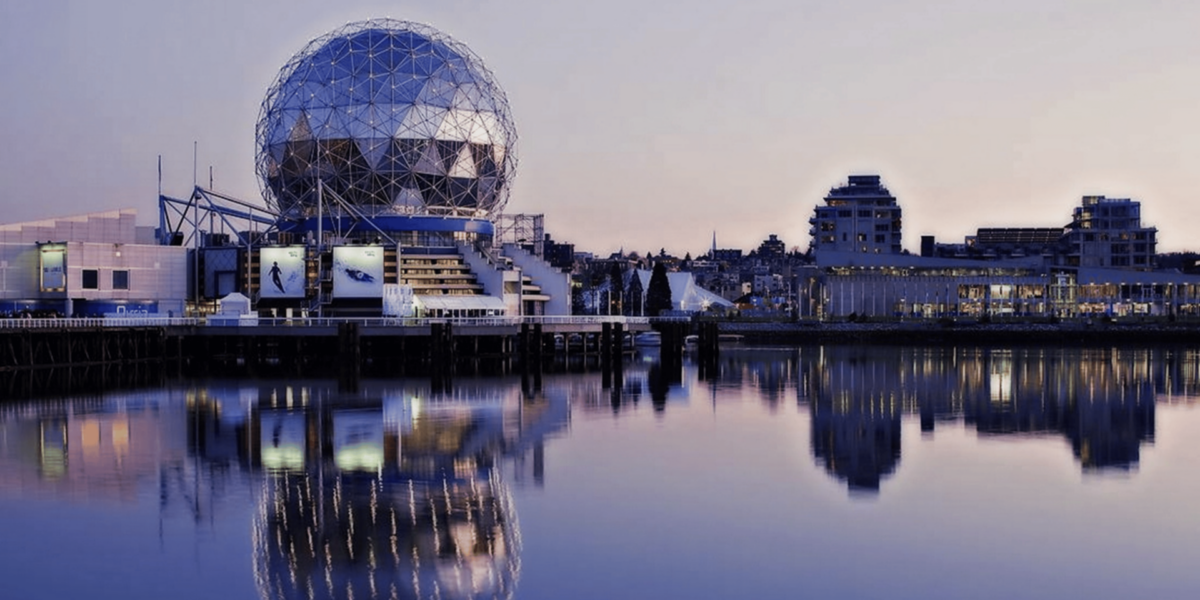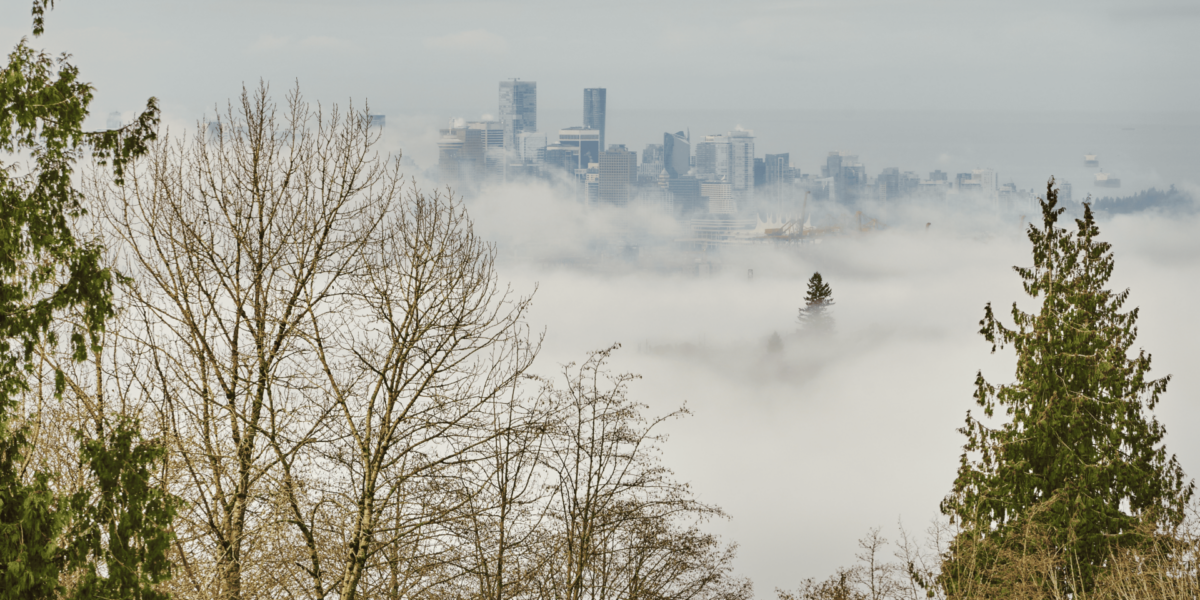Vancouver’s Weather Shapes Urban Mood
The weather in Vancouver does more than fill forecasts. It shapes the visual identity and emotional tone of the city. With long periods of overcast skies, sudden rainfall, and brief sunlight, the atmosphere remains in constant shift.
A local photographer navigating the city on foot sees how these shifts affect the landscape. A grey morning turns a high-rise into a silhouette. Afternoon fog blurs sharp lines into soft outlines. This constant change controls how people move, how buildings appear, and how public spaces feel.
Overcast Skies Soften the City’s Edges
Vancouver is known for its cloud cover, especially in fall and winter. These skies don’t just block sunlight—they filter it. As a result, buildings, streets, and natural features take on a muted, almost diffused tone.
When someone walks across Burrard Bridge on an overcast day, the steel appears less reflective. Colors flatten. Water loses its sparkle. The city becomes more uniform in tone, which alters perception. Instead of visual noise, there’s calm. The light turns the busy skyline into a quiet silhouette.
Rainfall Adds Texture and Reflection
Rain in Vancouver arrives frequently and without drama. Instead of storms, there’s steady, gentle precipitation that rarely stops life but transforms it. Rain brings texture to the streets—wet pavement reflects neon signs, tree branches glisten, and puddles mirror buildings.
A street-level photographer capturing daily city life during a rain shower will notice how these reflections double the visual field. A single light source spreads across surfaces. Cars parked along the curb cast distorted trails across soaked roads. Rain doesn’t just fall—it alters the surface of the city.
Breaks of Sunlight Create High Contrast
When the sun does emerge in Vancouver, especially after days of grey, it creates a sharp contrast. Bright beams cut through clouds, casting defined shadows and creating pockets of high intensity in an otherwise soft scene.
A person standing at a transit stop may feel the sudden weight of that sunlight. It draws attention to details easily overlooked—cracks in pavement, dust on a window, texture in brickwork. Sunlight after rain doesn’t just brighten; it defines. The city becomes sharper, more present, and more emotional.
Fog Blurs Boundaries and Depth
Fog is a regular visitor to Vancouver, particularly near the harbor and mountain edges. This weather event reduces visibility and reshapes the way people see depth and form in urban settings. Objects lose their edges. Distance disappears.
Someone looking out from a downtown high-rise during a morning fog sees the city fade in layers. The far shore vanishes, bridges become suggestions, and even tall buildings seem small. The sense of scale shifts. Fog erases the usual structure and replaces it with mystery. The city doesn’t look smaller—it feels infinite.
Seasonal Light Patterns Affect Perception
Vancouver’s light shifts with the seasons. In winter, days are short, and light remains low in the sky. In summer, long daylight hours stretch golden tones deep into the evening. These changes affect everything from architectural shadows to street visibility.
A visual storyteller moving through the city in January might catch a midday scene that looks like twilight. In contrast, that same location in July would stay bright well past dinner time. These differences influence how the city feels and how people interact with it. Light defines time, mood, and memory.
Reflected Light Enhances Urban Color
Vancouver’s layout—close to water, mountains, and glass structures—invites constant reflection. Light bounces off windows, rivers, and puddles. These reflections layer the environment with unexpected color and movement.
In a residential neighborhood near False Creek, the afternoon light reflects off a glass building and lands on nearby trees. A person walking by sees the leaves turn silver, even though the sun is behind them. These small shifts create an ever-changing display, where the city paints itself moment by moment.
Weather Creates Visual Contrast Between Nature and Structure
The contrast between nature and urban life is one of Vancouver’s strongest visual themes. Weather intensifies this relationship. Rain darkens tree bark but brightens the sky. Snow softens rooftops but defines branches.
A local artist sketching scenes from Stanley Park notices how weather separates or unites forms. On some days, buildings blend with trees in low light. On others, mist settles only in the forest, leaving downtown clear. The visual balance between nature and structure constantly evolves, depending on the sky.
Changing Conditions Influence Daily Routine
Weather in Vancouver doesn’t just change the view—it changes the rhythm of daily life. People adjust their schedules based on cloud movement, light availability, and rain patterns. These choices affect crowd behavior, traffic flow, and even body language in public spaces.
A commuter crossing Granville Street during a rain-heavy morning may keep their head down, pace brisk, steps calculated. The same person, under a break of sunshine, might pause, look up, and move more slowly. The city breathes differently depending on the light it receives.
Atmospheric Light Adds Narrative to Urban Spaces
Every street, alley, and building in Vancouver tells a different story depending on the weather. Light turns ordinary objects into meaningful moments. These shifts add emotional texture to familiar places.
A photographer documenting an alley behind a music venue might visit on multiple days. In drizzle, the walls absorb color. In full sun, graffiti casts shadows. In fog, the path disappears halfway down. The story changes based on the atmosphere. The scene remains still, but the city tells it differently each time.

